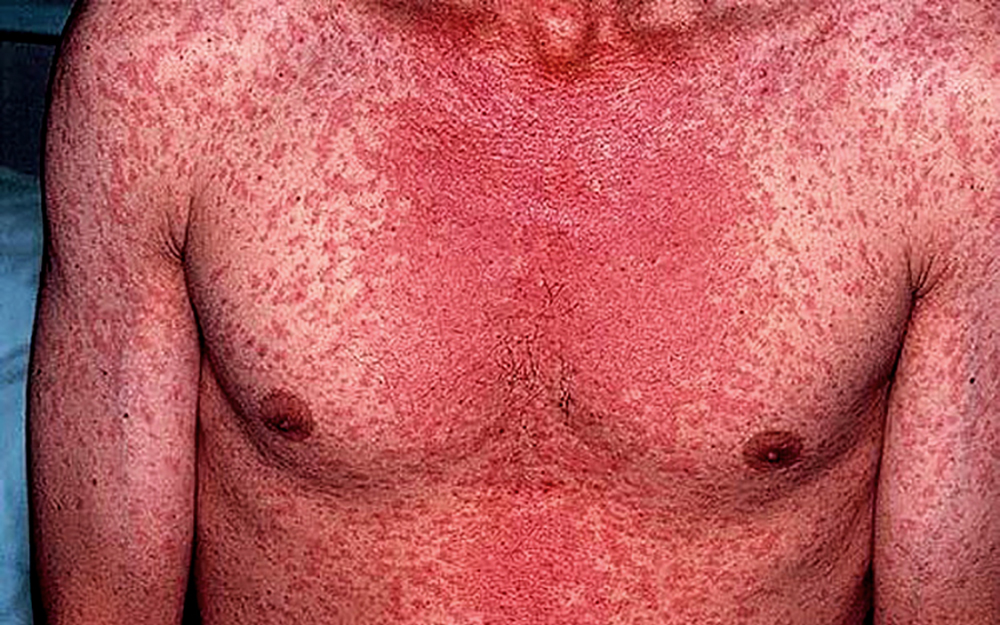
BY DR PETER KADILE
This month the total number of measles cases in the United States has reached 626 for 2019. This is the second highest number of cases in a single year since the disease was eliminated in the United States in 2000. Since the disease has been virtually eliminated in this country I have never diagnosed or seen a patient with the measles, but that may change. There have been a high number of measles outbreaks around the world with infected people traveling to the United States thus spreading the virus to non- vaccinated people.
Measles is a highly contagious virus that can live in the nose and throat of an infected individual. It is spread by coughing and sneezing. The virus can live up to 2 hours in the airspace where an infected person has coughed or sneezed, so someone (non-vaccinated) can catch measles if they simply breathe the air where an infected person was 2 hours prior.
Signs and Symptoms
- Appear 7-14 days after being infected
- High fever
- Cough
- Runny nose
- Red, watery eyes
- Tiny, white spots may appear inside the mouth (Koplik spots)
- The rash of small flat red spots will start on the head and spread downward to the feet
Complications of Measles
- ear infections and diarrhea can commonly occur
- sometimes severe complications such as pneumonia and encephalitis can occur which may require hospitalization and may lead to death
- the most common cause of death from measles in young children is due to pneumonia
- children with measles who develop encephalitis (swelling in the brain) may have convulsions and can result in deafness.
- A rare long term complication called subacute sclerosing panencephalitis (SSPE) can occur up to 10 years after the person has measles and has fully recovered. SSPE is a fatal disease of the central nervous system
Vaccination
The measles vaccine is very effective. One dose of the vaccine is about 93% effective in preventing the disease if exposed to the virus. Two doses are 97% effective.









































